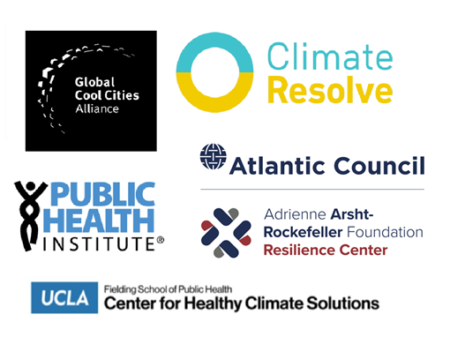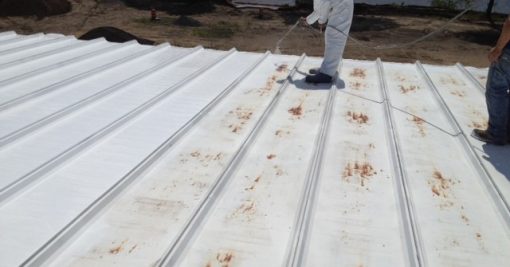This month marks the 20th anniversary of the deadly heatwave in Chicago, IL, which killed an estimated 739 people and showed that even in northern climates, urban heat kills. Our world was already warming in 1995, but 20 years ago this northern city wasn’t used to these extreme heat events and many Chicago residents didn’t have air conditioning units in their homes or apartments. Most of the victims of this extreme heat were either the very young, or elderly people living in poor neighborhoods, too afraid of crime to open windows or sleep outside.
As this article containing first-hand accounts from the key players reports, the residents, city officials and first responders were ill-prepared for such a deadly natural disaster twenty years ago. City officials were slow to respond. First responders and hospitals were understaffed and unable to help residents survive the extreme heat. And residents failed to listen when heat advisories were finally issued. Heat like this wasn’t supposed to hit a northern city like Chicago after all, and hundreds of people paid the price.
City officials quickly began to look at ways to bring down city temperatures after that tragic heat wave. Chicago was one of the first cities to require the deployment of cool roofing technology. Their 2001 Urban Heat Island Ordinance wrote cool (green, solar & white) roofs into law, and they’ve been building on that ever since.
This new ordinance is paying off. Yale researchers reviewedthe changes between 1995 and 2009 in Chicago’s vegetated and reflective surfaces. Researchers found that where reflectivity increased, temperatures went down. Most of the reflectivity increases in Chicago that brought down temperatures were a result of the new reflective roofs that were installed because of the new energy efficiency zoning codes in this northern climate.
Over the past 20 years, deadly heatwaves have hit cities all over the world. In one major disaster, 70,000 people lost their lives in Europe’s 2003 heat wave. Each year, heat records are shattered globally. According to NOAA, 2014 was the 18th straight year where average temperatures have topped 20th century averages in the United States. It was also the hottest year on record. NOAA just released data on the first half of this year showing that 2015 is on track to blow past last year’s records. These heat-waves are here to stay and are expected to get worse, and city officials everywhere are a beginning to understand the urgent need to adapt in order to protect their residents.
While these first-hand accounts of past heat-related disasters show us how far we’ve come in the past 20 years, it also shows us how important it is to plan for future heat events as our world grows ever-warmer. Research shows that reflective surfaces help bring down urban temperatures and save lives – even in northern cities like Chicago. That’s why city officials around the world are working with GCCA to adapt their cities to our changing climate.
GCCA has released several studies showing how reflective surfaces and cool roofs can save lives. For further information, please follow these links:
Evaluating the Health Benefits of Urban Cooling – GCCA worked with a top team of researchers to study how cool surfaces and vegetation save lives during extreme heat events in Baltimore, Los Angeles, New York City, and Washington.
Assessing the Health Impacts of Urban Heat Island Strategies in the District of Columbia – GCCA finds that cooler surfaces and more green space can save lives during heat waves in Washington, DC.
To learn how cities are working to bring down urban temperatures, please take a look at this report:
Urban Heat Island Policy Survey – GCCA and ACEEE survey 26 cities to learn how they are addressing excess urban heat.
For further information, please visit our Cool Roofs and Cool Pavement Toolkit knowledgebase, where we have over 600 studies, reports and surveys.


 The Global Cool Cities Alliance (GCCA) has established an award to honor the legacy and impact of Dr. Arthur Rosenfeld’s advocacy for cooler buildings, cooler cities, and a cooler planet. Dr. Rosenfeld was a founder of GCCA and a tireless advocate for building materials that improve thermal comfort and make a positive impact on global climate change. The Urban Cooling Achievement Award will recognize leaders who demonstrate Art’s drive, passion, and intelligence to overcome the challenges of excess urban heat.
The Global Cool Cities Alliance (GCCA) has established an award to honor the legacy and impact of Dr. Arthur Rosenfeld’s advocacy for cooler buildings, cooler cities, and a cooler planet. Dr. Rosenfeld was a founder of GCCA and a tireless advocate for building materials that improve thermal comfort and make a positive impact on global climate change. The Urban Cooling Achievement Award will recognize leaders who demonstrate Art’s drive, passion, and intelligence to overcome the challenges of excess urban heat.